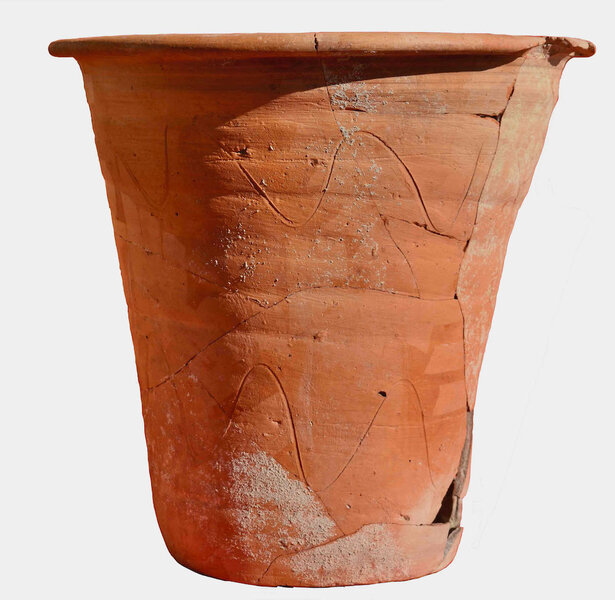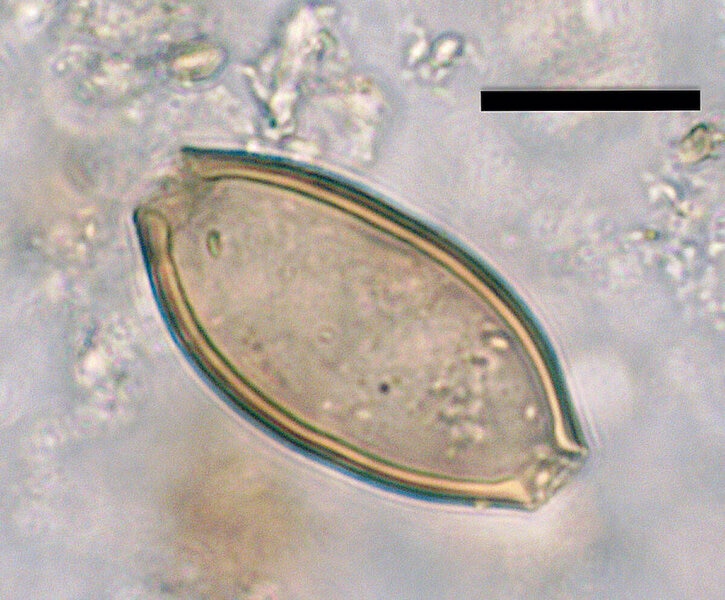Create a free profile to get unlimited access to exclusive videos, sweepstakes, and more!
Porta-potties existed in the ancient world too
…except they were much less sanitary.

They could be flowerpots. The ancient clay vessel below could pass for one, but you’d feel different if you scraped off some of the crud inside and peered at it through a microscope.
Bathrooms weren’t always sanitized. The ancient world wasn’t exactly that germaphobic, but you can’t really blame them when they didn’t have many scientific advancements and thought the suspected witch next door could hex you with disease. What eluded the ancient Romans was how parasites and other infectious microorganisms multiplied and spread, but until recently, what eluded archaeologists was which pots they actually used for porta-potties.
Archaeologist Piers Mitchell was aware of Roman latrine sites where many of these pots, assumed to be chamber pots, were found, but there was no further evidence to prove it. Now Mitchell and his team, who coauthored a study recently published in Journal of Archaeological Science Reports, have done the dirty work of examining the pots’ contents. Turned out they were chamber pots, and the eggs of a notorious parasite were the giveaway.
“Unless a Roman pot had its contents written on the outside, or remains of the contents still present at excavation, it is not easy for people today to estimate what each pot shape was used for,” Mitchell told SYFY WIRE. “This particular shape had lots of potential uses.”
What separated some pots from others were the concretions of mineralized urine and feces found at the bottoms of some of them. Trapped and preserved in that muck were 1,500-year-old human whipworm eggs. Chamber pots were used over and over again. Whipworm eggs deposited with human feces would be mixed with layers of urine and feces that built up and mineralized over time, creating concretions, and salts in human urine probably helped with preserving these eggs. Mitchell dissolved the concretions to reveal the parasite eggs that had survived.
Human whipworm, or Trichuris trichiura, and other parasites were rampant in the ancient world. Feces make excellent fertilizer, and it is thought the ancient Romans used both human and animal feces to fertilize their crops. This could mean infection if something wasn’t properly washed When people didn’t know where diseases came from, and therefore had no idea how to prevent them, it would have been easy to ingest these things by eating contaminated food — and for all the Romans’ aqueduct technology, the water was not exactly clean.
“Roman people did not realize that intestinal parasites were living organisms that could be spread from one person to another,” Mitchell said. “They did realize that fertilizing crops with both human and animal feces increased productivity on farms, so they would empty out toilets and sewers intermittently to use as fertilizer.”
If there are more crusty chamber pots where this came from, many ancient Romans must have been pretty miserable. Symptoms of trichuriasis, or human whipworm infection, include nausea, vomiting, diarrhea, and feeling something is gnawing at the insides of your intestines, because it is. Whipworms chew through the lining to lay their eggs (below) and hatch even more parasites. They can even create cysts this way. If infected (more like infested), you might see a random worm floating around in the toilet bowl. Maybe one was preserved in another chamber pot.
The ancient Romans didn’t have ivermectin — parasites are what it’s really supposed to be used for — to annihilate these beasties, so they had to live with them somehow. Rome was not exactly the cleanest city in those days. Whipworm thrives in human guts and feces, and when you’re sharing or emptying chamber pots, things can get unsanitary real fast. Did the Romans back then even recognize trichuriasis as any more than a stomachache? Mitchell knows ailments like this were so common, they could have been normalized and not seen as the terrors they were.
“Whipworm is the parasite found most commonly in Europe during the Roman and medieval periods,” said Mitchell. “As population density increased with the growth of towns, this made it easier for this kind of parasite to spread between people.”
Gross. Now we have one more reason to sigh in relief that modern medicine is a thing.




























